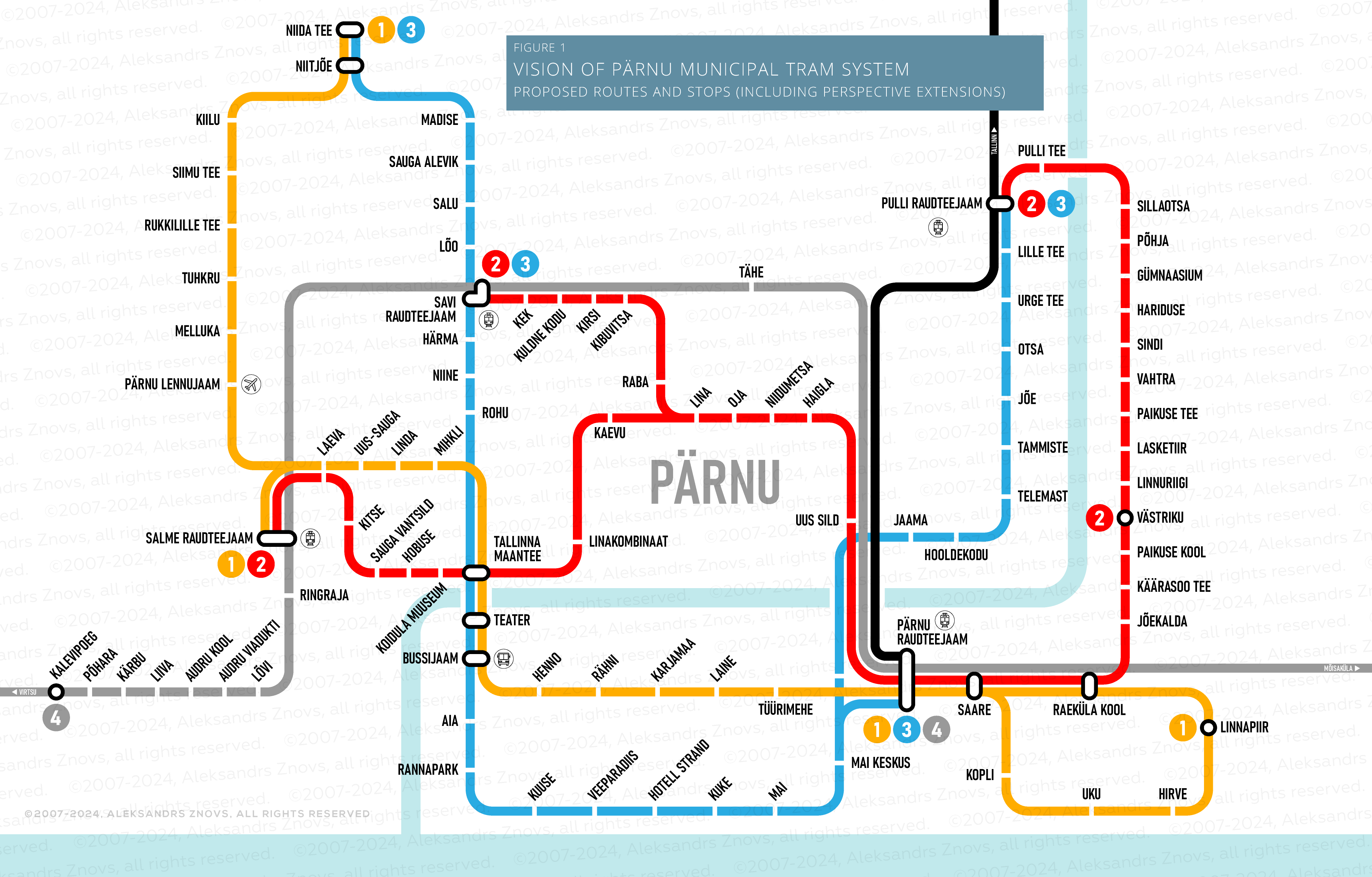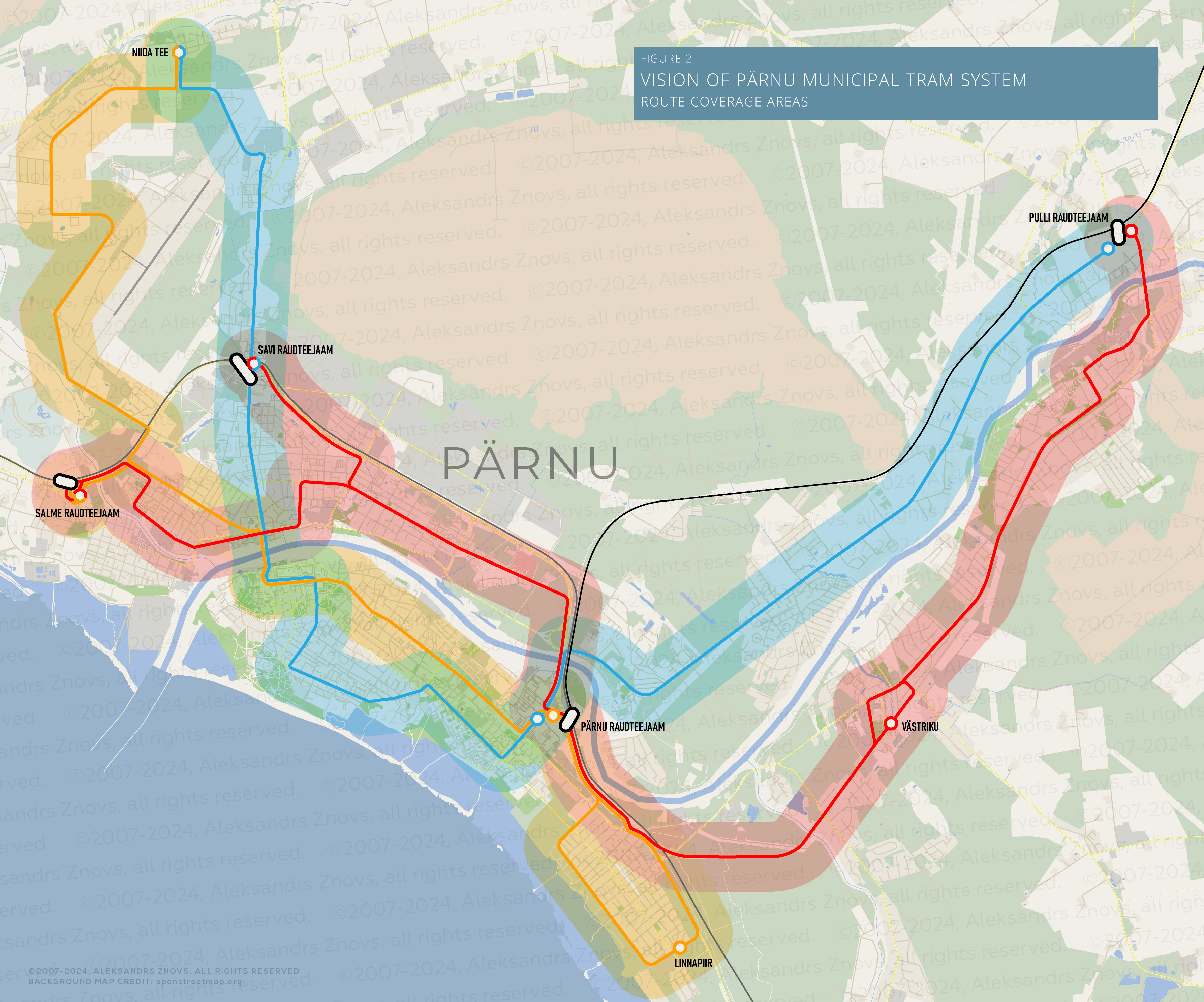Back to Estonia! Pärnu is the 4th largest town in Estonia with a population of approximately 40,000 people. During the summer season, there is a notable influx of tourists. By Estonian standards, this town is quite big. In my opinion, it deserves an efficient transport system.
Like many old Estonian towns, the streets of the historical part of Pärnu are quite narrow, however, this cannot be an obstacle to the creation of a small but convenient tram network, which would serve both the town and its suburbs. I tried to visualize my thoughts and am ready to share them with you. In Figure 1 you can see four routes. I find it to be enough to serve the majority of the passenger flow.
Let’s start with Route 1. It could start in Raeküla, pass through the entire city centre, connecting the southeastern part with the Pärnu Railway Station, bus station, and airport and terminate in the northwestern suburb of Eametsa. A shortened (peak hour) route would go from the central railway station to the station of the proposed narrow-gauge railway line in Salme. I propose this line to connect Virtsu with Pärnu and Mõisaküla.
Route 2 would serve mainly the northern part of the town. Starting from the narrow-gauge station in Salme, the route would pass through the central railway station and reach the suburban villages of Paikuse and Sindi, then reach Pulli Railway Station on the northeast. The shortened route would run from Västriku and terminate at the northern branch of the line at the proposed narrow-gauge station of Savi.
Route 3 could start at Pulli Station, go along the left bank of the Pärnu River, pass the central railway station, the southern part of the city centre at the coast, and then, through Savi and Sauga, terminate at Eametsa. This route would also have a shortened version with termini at the central railway station and the narrow gauge station of Savi.
As I already mentioned, Route 4 could be a part of the Virtsu-Mõisaküla narrow-gauge railway line and can be served by trains. The tram-train line can start its journey at Pärnu Railway Station and terminate at Ahaste (Kalevipoeg).
This is essentially what my concept of the Pärnu tram system is all about. In Figure 2, you can see the layout of the routes on a real geographic map as well as the coverage of residential areas with a radius of 300 m around the routes. It is worth mentioning that only 2-3 additional bus routes are enough for the entire transport system of the city to be complete.
That’s all for today. I kindly ask you to visit and like my page on Facebook where you can contact me in case of any question or claim mistakes found on the network maps. If it is more comfortable for you please follow me on Twitter just to be always informed about new uploads. Thanks.
Image credit: Kristian Pikner











